The COP 26 conference recently ended in Glasgow, where diplomats from almost 200 countries agreed to fight climate change and aid vulnerable nations. At the core of the ongoing discussions will be how to replace fossil fuels. And solar power remains our most viable alternatives because of its’ limitless supply. However, to replace fossil fuels with solar on a large scale, it’s vital for both business and government to implement broad-reaching initiatives and for homeowners to embrace them. One group working tirelessly to make solar energy affordable for low- and moderate-income families is the HBCU Clean Energy Initiative (CEI). CEI is one of the programs spearheaded by the HBCU Community Development Action Coalition (CDAC). (CDAC) was developed to help bring stakeholders together, such as HBCU’s, MSI’s (minority-serving institutions), CDCs (Community Development Corporations), and the Community Economic Development Industry. By connecting these organizations, HBCU CDAC helps build long-term economic opportunities for the HBCU/MSI students, small businesses near the campuses, and the broader community.
Recently, CEI organized a conference in Greensboro, North Carolina, where the purpose was to convene members of the local community to discuss phase two of the Greensboro Solar Cares Initiative. Henry Golatt and Natasha Campbell, Co-directors of CEI, were in attendance and shared some of the highlights from the event.
Q. Can you describe the primary purpose of the Greensboro event?
A. CEI convened stakeholders such as community leaders and government representatives to continue ongoing conversations on advancing equitable community economic development outcomes through residential clean energy demonstrations. Our goal is to increase clean energy awareness, workforce training, and utilization of solar within the local community. In addition to meeting with community organizations, we also met with ten homeowners selected to receive free solar units, each valued at approximately 15K. This latest event was preceded by a similar convening held in August.
Q. Can you tell us about some of the main stakeholders that attended?
A. We were pleased to have a passionate group of attendees all interested in supporting our mission. We had representatives from the U.S. Department of Energy, North Carolina A&T State University, the City of Greensboro, NC Department of Environmental Quality, and Winston Salem State University, among other participants.
Q. How do you get the HBCU students specifically involved in these projects?
A. There are several ways that both students and HBCU staff, faculty, and administrators engage with CDAC and its clean energy team. For example, at North Carolina A&T, students are actively leading utility savings research and volunteering to champion this work more broadly throughout the community as Clean Energy Ambassadors. We see pathways for transdisciplinary engagement of students at Historically Black Colleges and Universities and Minority-Serving Institutions. In this regard, students can join CDAC’s efforts to support and advance clean energy by participating in clean energy-focused scholarly research, career and job placements, clean energy demonstrations, and small business innovation. We also see students helping CDAC and the CEI team to craft and share stories of outcomes and impacts.
Q. How do you help homeowners pay for the associated costs of solar?
A. Currently, CDAC’s Clean Energy Initiative targets homeowners from what can generally be considered under-resourced communities. These communities are statutorily defined within the Community Reinvestment Act as low-and-moderate-income (LMI). From an energy equity perspective, individuals from LMI communities spend a disproportionate share of their household income on utilities. Therefore, the CEI program seeks to bring the benefit of solar to these communities first and foremost. In this regard, we are fortunate to have generous subsidies for the installation of solar provided through the support of the JPB Foundation. While we are grateful for this support, we are actively seeking additional partners and resources that will allow us to reach more households while establishing an evergreen funding model.
Q. Are there examples of other cities where you have successfully implemented these types of programs?
A. The model that we are using was first successfully deployed in Baltimore through Morgan State University. In this example, solar was deployed on over 33 units surrounding that campus. We have plans to reenter Baltimore and D.C. markets in 2022 to continue the deployment in partnership with local on-the-ground partners and stakeholders including HBCUs such as Howard University, Coppin State, and others.
Q. You mentioned that the U.S. Department of Energy was a participant in this meeting. How are they involved on a broader scale?
A. As you are aware, CEI was established by the U.S. DOE in collaboration with CDAC to replicate a successful model for stakeholder engagement that connects HBCU campuses to communities and creates opportunities for low-income residents to more fully participate in the benefits of clean energy. As such, we are incredibly pleased that the DOE participated in this conference. The agency sees our program as one of several models that non-profits, community organizers, and public institutions working together can use to make real impacts in moderate- and low-income communities with regards to energy justice. DOE also has a number of programs and a cadre of federal laboratories that are extremely helpful in informing and connecting our work on the ground to basic as well as applied research.
Q. Are there any other comments you would like to make about this program or the broader CEI initiative?
A. It is rewarding to be involved in these projects because it greatly benefits the local communities and the HBCUs. For example, we connect Greensboro residents and students to the economic and environmental benefits of clean energy through solar Installation demonstrations, workforce training, entrepreneurial programs, and showcasing how solar can save money on energy costs. And through the partnerships we have with local stakeholders already working in clean and sustainable energy innovation and workforce training, we are providing long-term tangible benefits both now and into the future.
For more information about the Clean Energy Initiative, click here
To read more Clean Energy Initiative blogs, click here
To learn more about CDAC, click here

